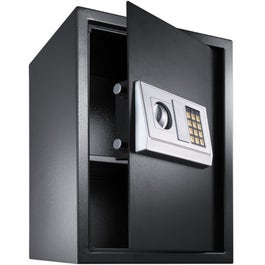Robust safes protect your valuables from thieves
Large amounts of cash, expensive jewellery, family heirlooms or important documents: heavy duty safes can keep anything you want protected against thieves. You can choose your own safe combination that you want to use to open your electronic mini vault or wall safe. If you ever forget the code, you can use the emergency key that is provided with many safes.
Our tip: a high-quality safe should have a double bolt locking system. This safety system locks the safe for several seconds after the wrong combination is entered three times. An LED display will inform you when the correct code has been entered and of remaining battery power.


